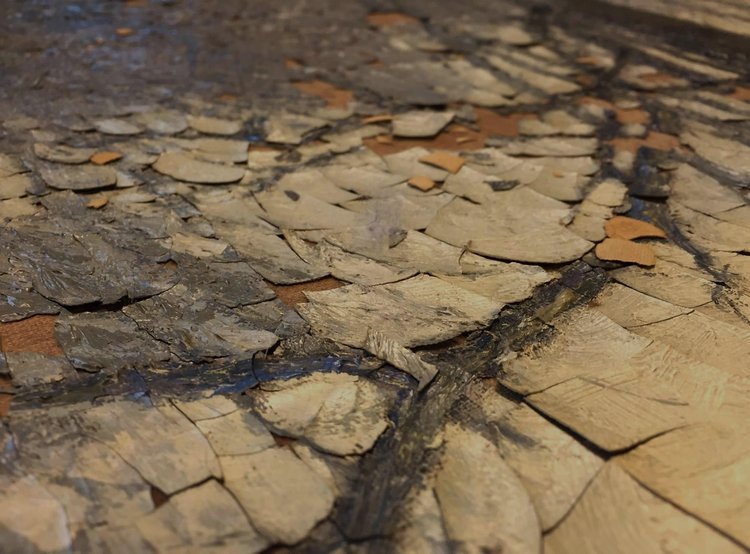Have you ever read one of our articles, and wondered, “what does that mean?” In the second installment of this series, we’ll be highlighting different conservation terms to support education. Happy learning!
Raking Light
Image of painting under raking light
Raking light, sometimes referred to as critical light, is harsh, angled lighting designed to highlight the surface topography. Raking light is often used during conservation examinations to reveal condition issues that may otherwise be visually undetected.
Recto and Verso
Sculpture recto
Sculpture verso
Derived from Latin, recto and verso are common terms in the art world. In Latin, rectum means right or correct, and versus means turned or changed. Instead of using the terms front and back, which implies an artwork is exclusively one-side, recto and verso identify the primary and secondary side, such as with two-sided images or figures.
Sgraffito
Detail of sgraffito decoration on frame corner
Sgraffito is a technique used in plaster or clay where the top surface is scratched or scraped back to expose a different colored layer beneath. Conserving the Condemned: The Last Judgement — The Conservation Center
Left Proper and Right Proper
Painting with tear though the figure’s left proper ear
When describing the right or left side of an artwork involving a figure, referring to the proper right or left instead specifies from the figure's perspective. From the viewer's perspective, the right side of the painting is the proper left from the image's perspective. Using the term "proper" avoids confusion when conservators document areas of damage or treatment to an artwork.
Blind Cleavage
Cleavage describes the separation between two previously bonded layers of a structure such as an inlayer veneer separating from its support, or the paint layer peeling from the canvas or panel surface. Blind cleavage is when the paint layer has not yet flaked off and is, therefore, more difficult to identify; hence being referred to as blind.






